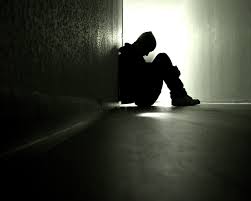
A major new study supported by the national Institute of Health claims that loneliness can increase the risk of premature death in older adults by 14%. The results of the study shed critical light on the growing understanding of the potential for loneliness to damage physical health along with psychological health.
Compromised immune systems and increased cellular inflammation were the two health fall outs of the perceived social isolation—the “feeling of loneliness”. This was found out by the research team that strongly linked loneliness to the two critical physiological responses in a group of 141 older adults.
“Conserved transcriptional response to adversity,” or CTRA is thought to be the reason behind the effect of loneliness on the affects of expression of genes, both the outcomes of the research found out.
The study found out that the longer an individual was exposed or experienced loneliness, the greater were the chances of the occurrence of CTRA on the expression of genes related to white blood cells or the leukocytes, the cells involved in protecting us against infections, and inflammation.
While increasing the genetic expression of inflammation, CTRA simultaneously decreases the genetic expression of white blood cells. In this case the term inflammation is referred to the internal damage within a cell and not the external swelling that people are generally associate with the term. Hence, researchers say, the damage happens within the body – in the cells.
Researchers claim the combination of the two effects has potential lethal ramifications. One of the major effects would be a lessened ability to fight infections along with a slow erosion of cellular health leaves. This leaves the body open to a host of external and internal problems, some of which worsen over time with few distinct symptoms.
There is a reciprocal relation between CTRA and loneliness. The study found that while loneliness predicted CTRA gene expression more than a year later, CTRA gene expression predicted loneliness more than a year later.
This essentially means that CTRA and loneliness tend to increase and enhance each other, one pushing the other as physical health is eventually undermined.
The researchers explained that the results of the study are “specific to perceived social isolation” and can’t be explained by stress or depression.
The same pattern of increased CTRA activity, along with a heightened “fight or flight” chemical response was found by the researchers while studying the effects of social isolation in a group of rhesus monkeys.
Researchers claimed that viruses, like the simian version of HIV grew faster in the monkey’s blood and brain tissue due to the combination of effects that led to impaired immune systems.
Noted University of Chicago loneliness researcher John Cacioppo was a part of the research team. Cacioppo had earlier this year, conducted a research and published a paper on the brain differences between lonely and non-lonely people. A “hyper-vigilance” to perceived social threats was noted by Cacioppo in the brains of lonely people.
The latest study was published in the Proceedings of eh National Academy of Sciences.
(Source:www.forbes.com)
Compromised immune systems and increased cellular inflammation were the two health fall outs of the perceived social isolation—the “feeling of loneliness”. This was found out by the research team that strongly linked loneliness to the two critical physiological responses in a group of 141 older adults.
“Conserved transcriptional response to adversity,” or CTRA is thought to be the reason behind the effect of loneliness on the affects of expression of genes, both the outcomes of the research found out.
The study found out that the longer an individual was exposed or experienced loneliness, the greater were the chances of the occurrence of CTRA on the expression of genes related to white blood cells or the leukocytes, the cells involved in protecting us against infections, and inflammation.
While increasing the genetic expression of inflammation, CTRA simultaneously decreases the genetic expression of white blood cells. In this case the term inflammation is referred to the internal damage within a cell and not the external swelling that people are generally associate with the term. Hence, researchers say, the damage happens within the body – in the cells.
Researchers claim the combination of the two effects has potential lethal ramifications. One of the major effects would be a lessened ability to fight infections along with a slow erosion of cellular health leaves. This leaves the body open to a host of external and internal problems, some of which worsen over time with few distinct symptoms.
There is a reciprocal relation between CTRA and loneliness. The study found that while loneliness predicted CTRA gene expression more than a year later, CTRA gene expression predicted loneliness more than a year later.
This essentially means that CTRA and loneliness tend to increase and enhance each other, one pushing the other as physical health is eventually undermined.
The researchers explained that the results of the study are “specific to perceived social isolation” and can’t be explained by stress or depression.
The same pattern of increased CTRA activity, along with a heightened “fight or flight” chemical response was found by the researchers while studying the effects of social isolation in a group of rhesus monkeys.
Researchers claimed that viruses, like the simian version of HIV grew faster in the monkey’s blood and brain tissue due to the combination of effects that led to impaired immune systems.
Noted University of Chicago loneliness researcher John Cacioppo was a part of the research team. Cacioppo had earlier this year, conducted a research and published a paper on the brain differences between lonely and non-lonely people. A “hyper-vigilance” to perceived social threats was noted by Cacioppo in the brains of lonely people.
The latest study was published in the Proceedings of eh National Academy of Sciences.
(Source:www.forbes.com)





